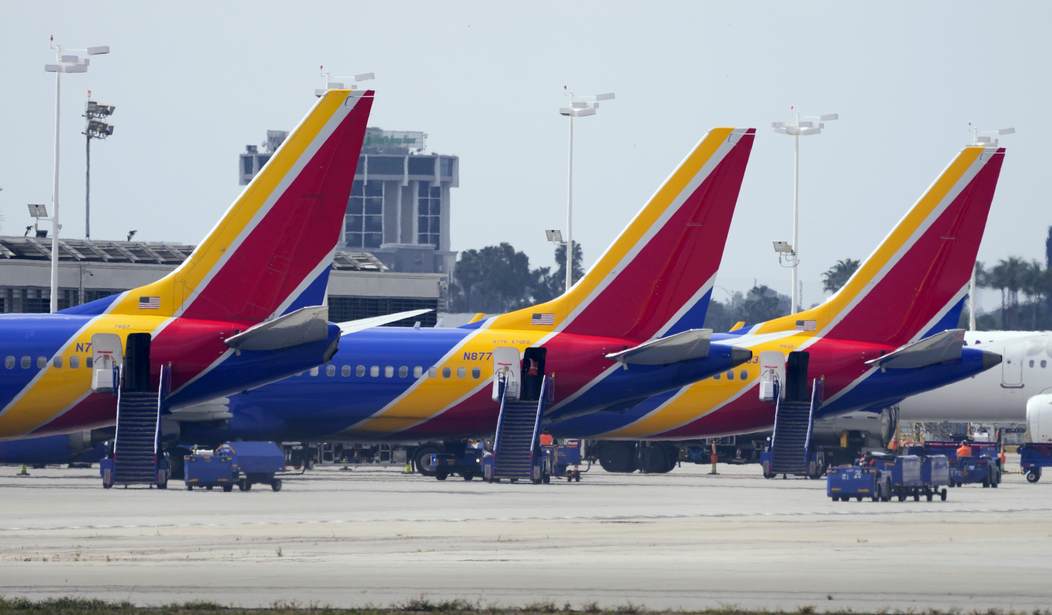It seems like we can't finish out a week here without at least one story of something going wrong with a Boeing 737 Max flight somewhere in the world. The latest incident probably isn't the manufacturer's fault, however, though it was no doubt distressing for some of the 175 passengers traveling from Phoenix to Oakland, California back on May 25. Traveling at more than 30.000 feet in the air, the Southwest Airlines flight suddenly began to dip and slide to the side, followed by a series of left-to-right "waggles" of the tail of the aircraft. This unintentional maneuver is known as a "Dutch roll" in the aeronautics community. The motion was severe enough that the aircraft suffered significant structural damage, but the pilots were still able to land the plane safely in Oakland. Apparently everyone must have been buckled in because no injuries were reported, thankfully. (NY Post)
A Southwest Airlines Boeing plane experienced a rare Dutch roll at 32,000 feet in the air that resulted in significant damage to the aircraft that left it out of service, officials said.
Southwest flight N8825Q, a Boeing 737 carrying 175 passengers, was traveling from Phoenix to Oakland on May 25 when its tail began to wag left and right, causing the plane’s wings to rock from side to side.
The phenomenon, known as a Dutch roll, caused major damage to the plane, but the pilots were able to regain control and land it safely in Oakland, according to the Federal Aviation Administration
A preliminary investigation showed that a power-control unit that provides backup power to the rudder had been damaged. That might have contributed to the sudden loss of lift for one of the wings. It was not clear from the initial report whether the damage to the power-control unit happened before they took off or during the flight. The details of the other "major damage" to the plane were not provided.
The FAA reports that this type of midflight aberration happens often enough that pilots are trained in how to deal with it when it takes place. Clearly that training paid off since they were able to rapidly regain control of the craft and land it without incident despite the damage. It would not, however, be surprising to learn that people in the rear of the plane were shaken around quite a bit and some beverages might have wound up on the floor. It was no doubt a frightening moment.
Returning to the ongoing safety questions, we now may have yet another clue as to why some of Boeing's planes seem to be falling apart. You'll probably find this hard to believe, but one of the company's suppliers was tricked into buying fake titanium. Considering what parts the titanium is used for, that's a very serious issue. (Daily Beast)
Boeing and Airbus are facing yet more turbulence after a parts supplier discovered they’d had been tricked into buying counterfeit titanium for use in recently built aircraft. The Federal Aviation Authority said Friday it was investigating the matter after Boeing flagged that components made from titanium had been sold using fake documentation. Spirit AeroSystems, which supplies fuselages for Boeing and wings for Airbus, noticed the issue when workers found small holes in the titanium from corrosion.
They use titanium in many of these parts because of the high strength of the metal and the fact that it virtually never rusts. But these titanium parts were showing up with holes in them caused by rusting during inspections. The parts are used in passenger entry doors, cargo doors, and components connecting engines to mainframes. They are also used to secure the plane's heat shields. That all sounds pretty important to me and could represent a significant safety concern. The good news is that Boeing reported this to the FAA as soon as the corrosion was discovered and an investigation is ongoing.
We will close out on a slightly more technical note and it's something I personally found interesting. In case you've never heard of a "Dutch roll" in terms of flight performance (I hadn't) you can learn how it works by watching this brief video from Flight Club.








Join the conversation as a VIP Member